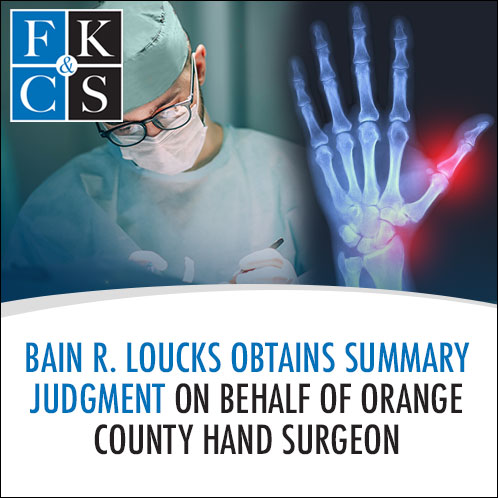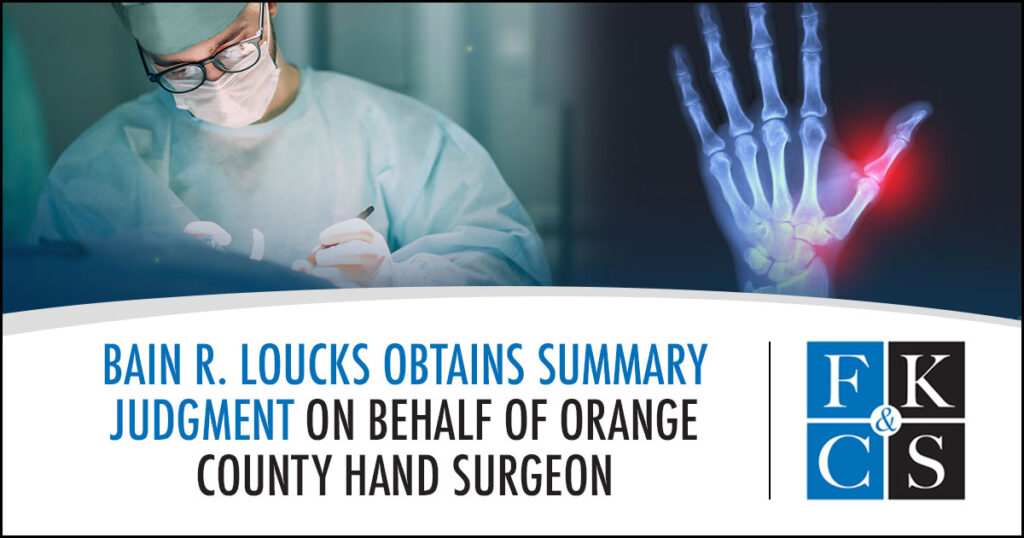 In May 2019, the plaintiff sustained a traumatic injury to his left thumb and was diagnosed with a lacerated extensor pollicus longus (EPL) tendon. Based on the diagnosis, Feldman, Kleidman, Collins & Sappe LLP’s client (FKC&S), a hand surgeon based in Orange County, NY, appropriately recommended surgical repair of the lacerated tendon.
In May 2019, the plaintiff sustained a traumatic injury to his left thumb and was diagnosed with a lacerated extensor pollicus longus (EPL) tendon. Based on the diagnosis, Feldman, Kleidman, Collins & Sappe LLP’s client (FKC&S), a hand surgeon based in Orange County, NY, appropriately recommended surgical repair of the lacerated tendon.
Surgery was performed several days later, wherein the EPL tendon was repaired. During that surgery, FKC&S’s client did not visualize any injury to an adjacent tendon, known as the extensor pollicis brevis (EPB) tendon. She followed the plaintiff post-operatively and appropriately recommended hand therapy as well as occupational therapy to rehab the repaired tendon.
The plaintiff complained that he continued to have stiffness and numbness in the thumb. When those symptoms did not improve, he sought treatment with a secondhand surgeon at a well-known hospital in New York City.
The second surgeon performed a workup of the plaintiff and diagnosed him with tears of the EPL and the EPB tendons. The second surgeon performed surgery on the plaintiff in November 2019, about six months after the first surgery. The operative report indicated that the second surgeon repaired the EPL tendon and also reattached the EPB tendon.
The plaintiff commenced a medical malpractice action alleging that the first surgeon was negligent in failing to properly diagnose the extent of their injuries, failing to adequately explore the operative field for additional injuries and failing to repair all of the tendons.
Bain R. Loucks filed a motion for summary judgment on behalf of the hand surgeon, arguing that the care and treatment was consistent with the standard of care and there was nothing that the hand surgeon did or failed to do that proximately caused any of the plaintiff’s injuries. In particular, the surgeon opined that during the course of the first surgery, the operative field was properly explored and there was no injury to the EBP appreciated.
In opposition to the motion, the plaintiff submitted an affidavit from the second surgeon, however, the affidavit failed to clearly illustrate a departure from the standard of care, a fact that FKC&S highlighted to the court in reply papers. The court agreed that the plaintiff failed to meet his burden.
In dismissing the complaint, the court held that “there is nothing in [the second surgeon’s affidavit] stating that the medical care provided by [the first surgeon] deviated from accepted medical practice.” The court further noted that the second surgeon failed to offer any opinion as to when the EBP tendon had ruptured – whether it was ruptured at the time of the first surgery or whether it ruptured sometime after the first surgery. Accordingly, the court dismissed the case in its entirety.
This is a great result for FKC&S’s client, as she avoided the agony of a trial and the loss of time caring for her patients. This case also serves as a reminder of the importance of submitting a detailed affidavit on behalf of the defendant physician that refutes the allegations of negligence.

